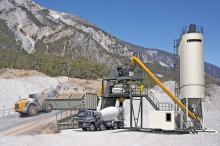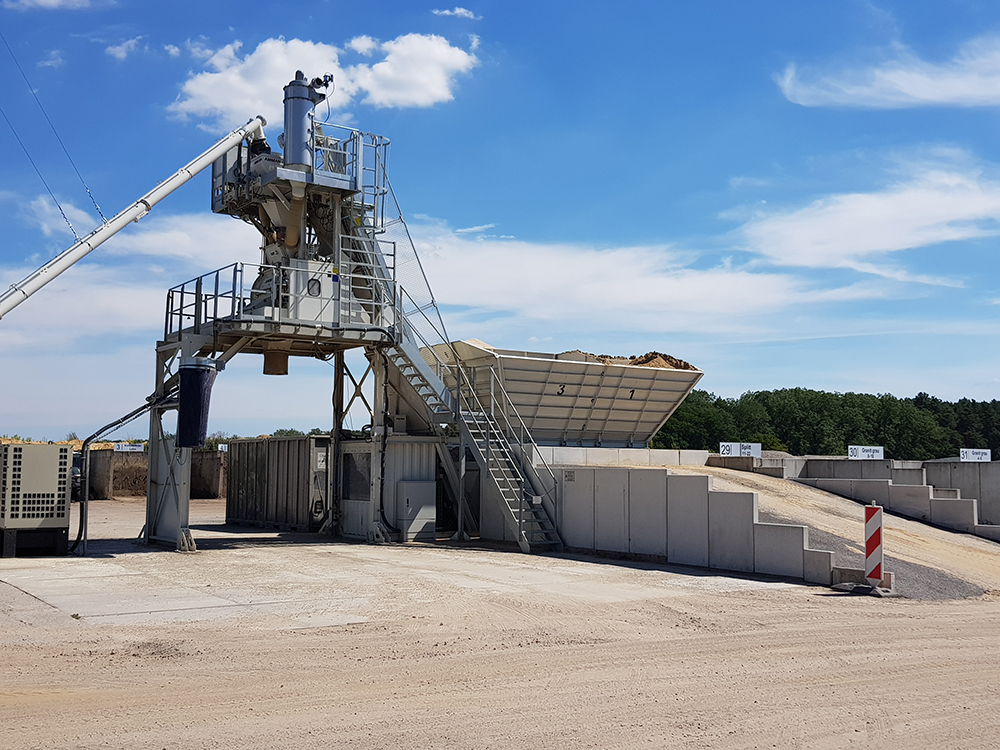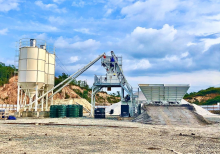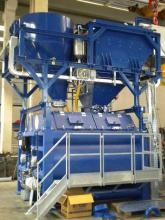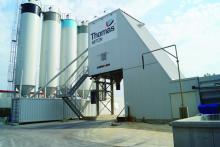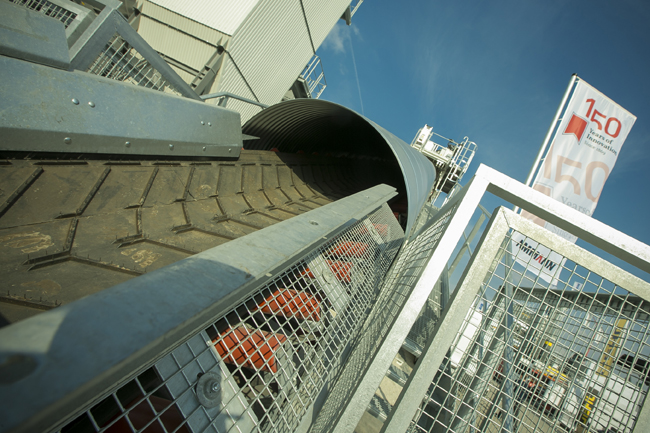
New advances in concrete plant technology will help boost materials quality for users. The latest machines are more versatile and more productive than previous generation equipment. Ease of transport and fast assembly/disassembly and commissioning are other important factors for the latest plants.
Research and development is an important issue for all manufacturers in the segment. With
Timely concrete deliveries are also crucial for the sector and
“True innovation for our industry is not about constructing new technologies which deliver the same results,” said Dave Donaldson, Optimization Business Unit Manager at Command Alkon. “Innovation comes by taking a disruptive force and harnessing it to benefit your goals. It should not be about overwhelming the dispatcher with more and more information; it should be just the opposite. Let the engine digest all of that information, analyse it and then make suggestions on how to best use the resources available.”
Throwing more information at the dispatcher or adding more people and trucks does not solve the problem. Better decisions must be made, and in a highly dynamic dispatch and logistics environment, the firm claims that this can be achieved with an integrated optimisation engine.
Concrete production technology has also improved with the introduction of new plants. Ease of transport is a key feature of the CBT series of concrete plants from Ammann. The range includes the CBT 105 to the CBT 150 TB Elba models, which are said to deliver high-quality production, while offering reliability and efficiency.
The plants are said to be optimised for transport and can produce up to 128m³/hour of concrete. Fast installation times, easy relocation and compact transport dimensions are key design features. The plants all feature sophisticated folding mechanisms and suitable components.
The basic unit can be transported with two standard containers and one standard flat-rack container. Depending on the size of the plant, the compact CBT TB Elba mixing plant is equipped with Ammann twin-shaft mixers of the CEM TP Elba series with a compacted concrete output from 2-3.5m³.
The newly developed linear bin series CEL 25 Elba has the storage capability of three to eight different grain fractions and an active storage capacity of 75-100m³. It allows a wide range of applications, particularly when considering the container transport dimensions.
Depending on requirements and customer preferences, the CBT TB Elba mixing plant can also be optionally equipped with the linear bin of the CEL 35 Elba series from the Ammann portfolio with a storage capacity up to 210m³.
Developed for an efficient concrete cooling solution, the new Lintec Eisanlagen (LEA) plant from
LEA utilises ammonia (NH³) as the main refrigerant, which is effective and also environmentally friendly as it is water soluble and features a simple elemental structure. The firm adds that the plant utilises a novel platelet method, meaning that it offers energy savings of up to 30-50% compared to conventional drum ice plants.
The LEA100 is a dual function ice/ice water plant, with the selection controlled by a single switch. The innovative design allows production of either ice or chilled water from the same ice generator module.
According to the firm, the LEA plant is highly durable and versatile, allowing it to handle water of far greater total dissolved solids (TDS) levels than conventional ice plants. The first-in-first-out (FIFO) principle in the LEA plant ensures that the oldest ice is consumed first to avoid any blockage or glaciation from older and stagnant ice.
The new plant is an update on the existing Euromix 3300 model and features the addition of 1m interior stairwells on either side of the mixing plant, as well as an inspection platform on each side.
“The new plant offers 100% more space on the mixing platform and 200% more walking and standing space for service and maintenance works,” said Erwin Schneller, managing director of SBM Mineral Processing.
The preexisting Euromix 3300 is SBM’s biggest selling mixing plant, and the company says it is adding the new Euromix Space 3300 model due to customer feedback.
The Euromix Space 3300 has a transport width of 3m, an operational width of 5m, and produces 145m3 of concrete per hour. The first of the new plant have been sold to customers and will be on-site by this summer, said Michael Vockner, project management, SBM Processing.
Vockner said the interior stairway of the Euromix 3300 Space makes maintenance of the plant much easier.
“We are introducing the Space model initially on the 3300 and may extend it in future to our other mixing plant models in future,” said Vockner. SBM also supplies the 1600, 2200, 2500, 3000 and 4000 concrete mixing plants.
SBM is stressing the mobility of the new plant, which can be moved from one site to another by articulated lorry. It says the quick and easy relocation of a plug-and-play plant takes priority. The operational and transport-optimised modules are equipped with three-axle-undercarriages making them both self-supporting trailers and independent components that can be moved on public roads.


